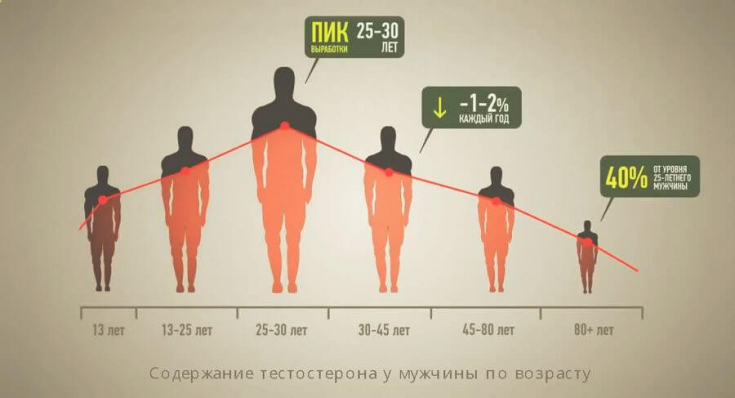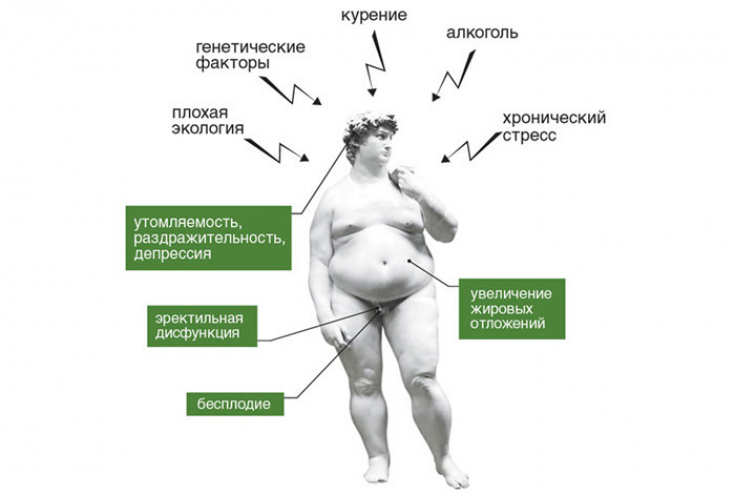Male hypogonadism is defined as the presence of low testosterone levels accompanied by clinical signs and symptoms.
The Endocrine Society divides androgen deficiency symptoms into 2 groups.
- The first group includes: eunuchoidism, decreased libido, erectile dysfunction, gynecomastia, infertility.
- The second group includes less specific symptoms such as decreased energy, depressed mood, decreased muscle mass, increased body fat.
In older men, the symptoms of hypogonadism are less specific. Therefore, there is some debate as to whether Testosterone adjustments should be done in this case.
On estet-portal.com read if testosterone decline in old age is a pathology requiring treatment.
- Decrease in testosterone levels in men over 60
- Hypogonadism in young men
- Does testosterone decline require correction in men over 60
Decrease in testosterone levels in men over 60
Although decreased libido and erectile dysfunction have also been observed in older men, they are rarely caused by low testosterone, but rather by other age-related changes.
There is evidence that testosterone levels decline with age in all men, regardless of symptoms, estimated at 1% to 3% per year.
One study found that serum testosterone levels were below normal levels in 20% of men aged 60 and nearly 50% of men aged 80.
Symptoms commonly associated with low testosterone levels are less specific in older men and may be due to other comorbidities.

For example, erectile dysfunction can be the result of vascular insufficiency, neurological disorders, psychogenic causes, or substance use.
Conditions such as diabetes and atherosclerosis are more common in older men, with up to 40% of men over 50 years of age having evidence of vascular insufficiency as a major cause of their erectile dysfunction.
Diagnosis of erectile dysfunction: why the organ does not work
Hypogonadism in young men
In young men hypogonadism is more commonly characterized by signs and symptoms of the first group, such as decreased libido and erectile dysfunction.
- pathology of the hypothalamus;
- testicular disease;
- radiation exposure;
- genetic disorders such as Klinefelter's syndrome.
Many clinicians now diagnose hypogonadism in older men based on
low serum testosterone, with or without symptoms, largely on the assumption that it is a pathological condition requiring treatment.
 But is it really so?
But is it really so?
One study treated testosterone replacement therapy in men with sexual dysfunction who were over 65 years of age and had a total testosterone level of less than 275 ng/dl (9.54 nmol/l). These tests showed only modest improvements in sexual function.
A review of 40 studiesshows little association between symptoms and serum testosterone levels
in older men. This may be because a high percentage of older men, many of whom are asymptomatic, have
lower testosterone levelsthan currently suggested thresholds.
The true thresholdbelow which serum testosterone levels are abnormal may be lower in older men. Due to the low correlation between symptoms and biochemical testosterone levels, how should
low testosterone levels be defined and interpreted in older men? The answer to this question is not yet clear.
However, it becomes clear that low testosterone levels in older men do not always indicate pathology, but may be the result of
normal physiological age-related changes, and does not always require hormonal correction, even in the presence of clinical symptoms.






